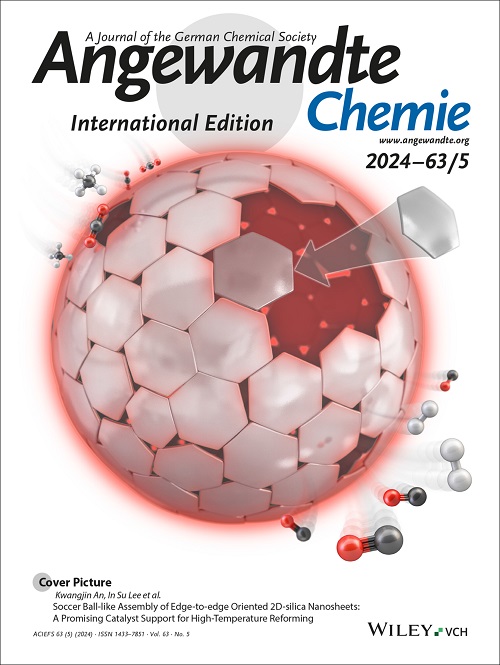揭示神经元特异性荧光探针NeuO的作用模式:通过PAK6激酶进行细胞内磷酸化。
IF 16.9
1区 化学
Q1 CHEMISTRY, MULTIDISCIPLINARY
引用次数: 0
摘要
NeuO是一种有趣的分子探针,能够选择性地标记异质脑细胞群中的活神经元。负责这种神经元标记的精确机制一直是一个谜。我们研究了NeuO荧光的四种潜在机制,包括它与神经元蛋白的相互作用、转运到神经元、从胶质细胞输出以及神经元内部的结构改变。我们的研究发现,NeuO通过PAK6激酶磷酸化发生结构变化,导致神经元高荧光,可能是由于神经元内的荧光激活和细胞内滞留。这一发现提高了我们对神经元中NeuO分子机制的理解,并促进了可被活细胞中激酶选择性修饰的新化合物的开发。本文章由计算机程序翻译,如有差异,请以英文原文为准。
Unraveling the Mode of Action of a Neuron-Specific Fluorescent Probe, NeuO: Intracellular Phosphorylation Through PAK6 Kinase.
NeuO is an intriguing molecular probe capable of selectively labeling live neurons within a heterogeneous population of brain cells. The precise mechanism responsible for this neuronal labeling has remained a longstanding enigma. We investigated four potential mechanisms underlying NeuO's fluorescence, including its interaction with neuronal proteins, transportation into neurons, export from glial cells, and structural alterations within neurons. Our study found that NeuO undergoes structural changes via phosphorylation by the PAK6 kinase, resulting in high fluorescence in neurons, likely due to fluorogenic activation and intracellular retention within neurons. This discovery improves our understanding of the molecular mechanism of NeuO in neurons and facilitates the development of new chemical compounds that can be selectively modified by kinases in living cells.
求助全文
通过发布文献求助,成功后即可免费获取论文全文。
去求助
来源期刊
CiteScore
26.60
自引率
6.60%
发文量
3549
审稿时长
1.5 months
期刊介绍:
Angewandte Chemie, a journal of the German Chemical Society (GDCh), maintains a leading position among scholarly journals in general chemistry with an impressive Impact Factor of 16.6 (2022 Journal Citation Reports, Clarivate, 2023). Published weekly in a reader-friendly format, it features new articles almost every day. Established in 1887, Angewandte Chemie is a prominent chemistry journal, offering a dynamic blend of Review-type articles, Highlights, Communications, and Research Articles on a weekly basis, making it unique in the field.

 求助内容:
求助内容: 应助结果提醒方式:
应助结果提醒方式:


